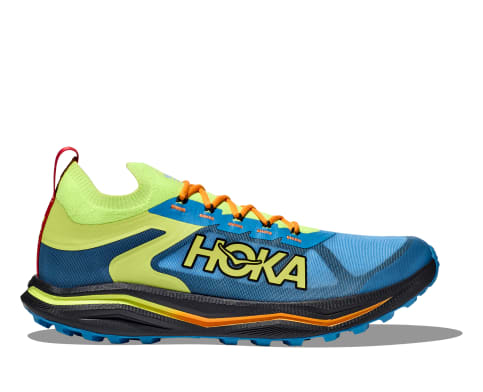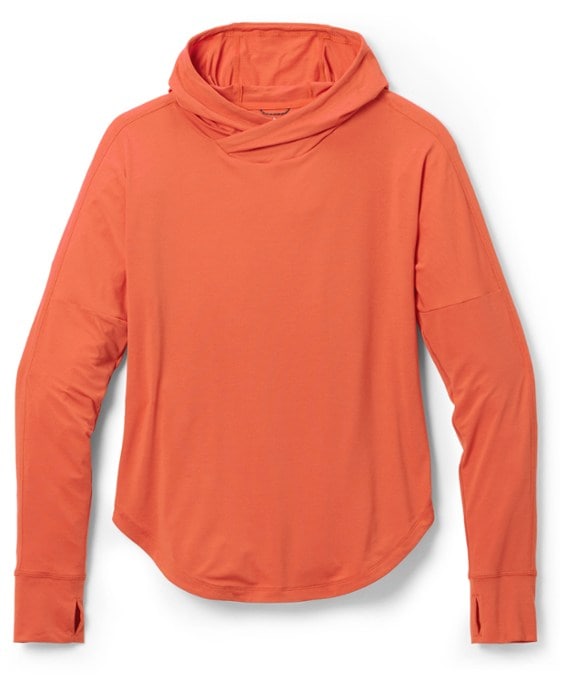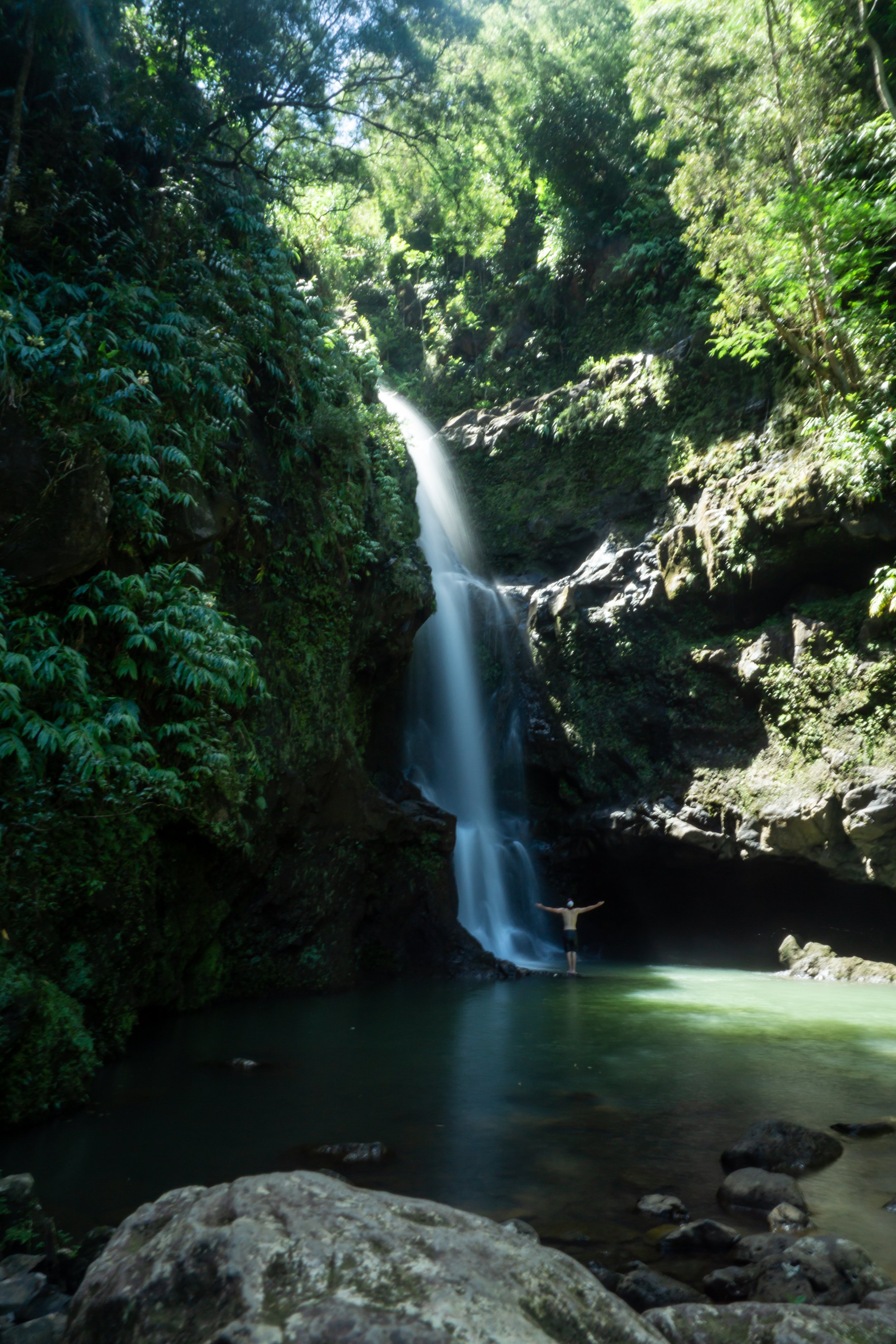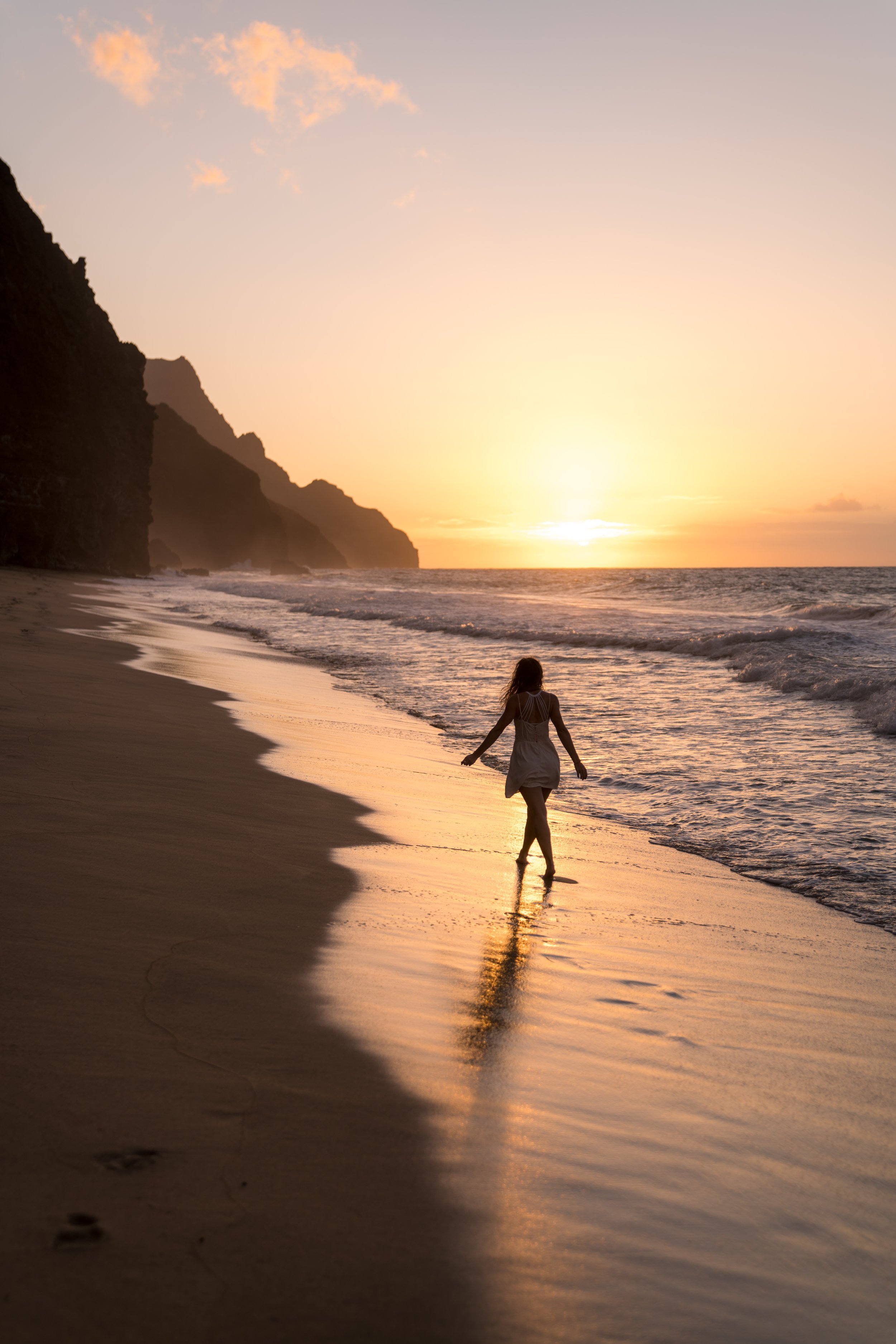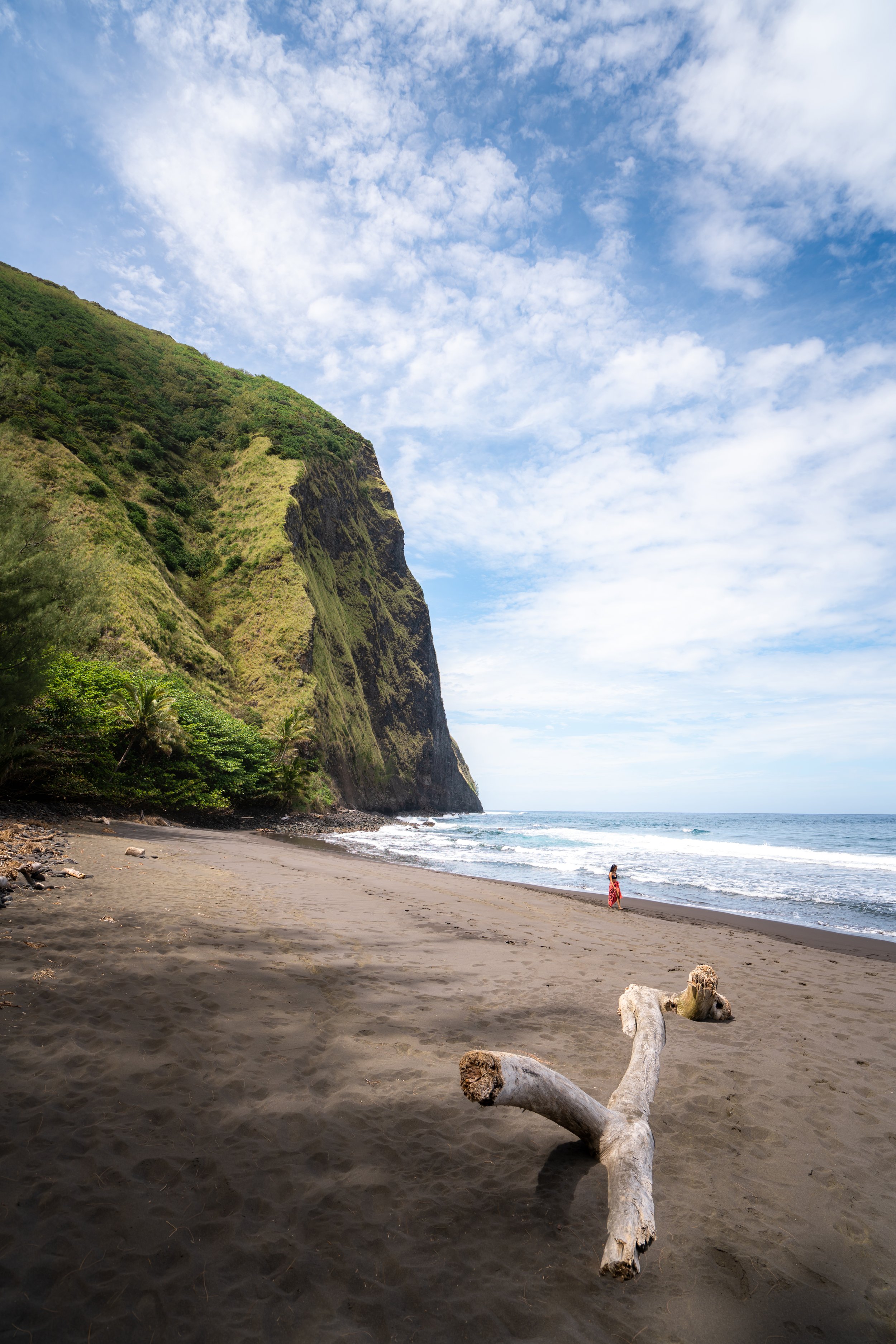Hiking the Hulopoʻe-Huawai Fisherman’s Trail on Lānaʻi, Hawaiʻi
Distance: 4.2 miles / 6.8 km
The Hulopoʻe-Huawai Fisherman’s Trail, more commonly known as the Fisherman’s Trail for short, is a beautiful coastal hike along the South Shore of Lānaʻi that stretches from the pristine sands of Hulopoʻe Beach to the towering cliffs above Huawai Bay.
The Fisherman’s Trail follows the path of a historic coastal trail that linked different coastal communities on Lānaʻi together, like Kapihaʻā, a Hawaiian village located along the first half of the trail from Hulopoʻe.
Today, hikers can explore the full 2.1-mile (3.4 km) trail from Hulopoʻe to Huawai or vice versa, but my personal preference is to begin at Hulopoʻe because the Fisherman’s Trail follows a gradual uphill path, which I prefer to hike up first in order to have a more casual hike on the way back.
Fisherman’s Trailhead Parking
Parking for the Fisherman’s Trail is located at either one of two trailheads, depending on which direction you prefer to hike.
First, parking for the eastern trailhead, located near the Four Seasons, is at Hulopoʻe Beach Park. This is the more popular of the two options, given its proximity to the beach and other attractions, like the Sweetheart Rock Trail.
Alternatively, parking can be found at the Huawai Trailhead on the western end, located on the far side of the Mānele Golf Course, away from the resort.
Google Maps Directions: Hulopoʻe Trailhead / Huawai Trailhead
My Hawaiʻi Hiking Checklist
Osprey 3L Water Bladder - The Osprey 3L water bladder is the most universal hiking and backpacking water bladder on the market, and it’s my go-to because of the slide-off seal that allows it to be quickly filled from the top. Additionally, individual parts are easily replaceable, such as the bite valve.
Blister / Heel Protectors - I swear by these cheap, amazing heel protectors to prevent blisters for nearly every kind of hiking and backpacking that I do!
Hiking / Trail Running Shoes - Depending on the type of trail, I prefer to use either the Keen Targhee for longer, more rugged hiking or the HOKA Zinal Trail-Running Shoe for lighter, less intense trails. In either case, both have been amazing to me for many years across countless environments, and both can be found in men’s and women’s sizes. - (Men’s Keen / Women’s Keen) (Men’s HOKA / Women’s HOKA)
Sun Shirt w/ Hood - A quality sun shirt can be your best friend on a trail with minimal shade, which can be found in both men’s and women’s sizes.
High SPF Sunscreen - Packing high-SPF sunscreen is a must for long days outside!
Hiking the Fisherman’s Trail
To begin from Hulopoʻe Beach, on the Four Seasons side of the hike, walk down to the far western end of the beach to find the Fisherman’s Trailhead.
In the beginning, the Fisherman’s Trail winds its way along the rocky coastline of Hulopoʻe Bay, where it stays relatively close to the water until it crosses the second beach.
It’s always great to see Hawaiʻi’s endemic Maʻo growing in this heavily altered environment that’s dominated by non-native grasses and trees.
As I’m sure it’s obvious, there is next to no shade on the Hulopoʻe-Huawai Fisherman’s Trail, which is why I strongly suggest hiking in a hooded sun shirt to be safe.
This is the first of two different 'beaches' where the Fisherman’s Trail descends to the water before climbing the beautiful sea cliffs that begin near Kaluakoʻi Point.
This is a good reminder that at least half of the Fisherman’s Trail falls under the Mānele-Hulopoʻe Marine Life Conservation District, which is subject to stricter regulations than other shoreline trails, much like the Hanauma Bay Trail on Oʻahu.
This means that dogs are not allowed on the Fisherman’s Trail from Hulopoʻe Beach to Kaluakoʻi Point, just like the Puʻu Pehe Trail.
This sign signifies that the area shortly ahead is known as Kapihaʻā Village, a historic Hawaiian village along the South Shore of Lānaʻi.
This is the second beach crossing, and it’s the last time the Fisherman’s Trail descends to sea level on the way up to Huawai.
The palm trees in the distance are located at Kaluakoʻi Point, which can serve as one of a few good visual reference points along the Fisherman’s Trail, whether going east or west.
Fisherman’s-Kapihaʻā Village Junction
At roughly 0.6 miles (1.0 km), the Fisherman’s Trail meets the Kapihaʻā Village Interpretive Trail—a short, 0.4-mile (0.6 km) side trail that travels through at least 16 federally and state-protected historic sites—connecting the Fisherman’s Trail to what is now the Mānele Golf Course Clubhouse.
That being said, please show respect to this and all culturally historic sites, both here on Lānaʻi and throughout Hawaiʻi.
Past Kapihaʻā, the Fisherman’s Trail begins to climb up to the sea cliffs where the best views can be found along the second half of the hike.
This short section is as steep as the Fisherman’s Trail on Lānaʻi gets!
Kaluakoʻi Point
Kaluakoʻi Point is the halfway point on the Fisherman’s Trail, and it’s where the views atop the sea cliffs begin, which only continue to get better as the trail climbs higher toward Huawai Bay.
On a different note, Kaluakoʻi Point is the end of the Mānele-Hulopoʻe Marine Life Conservation District.
These are only some of the views looking west from Kaluakoʻi Point, but as previously mentioned, I think they only get better the further the trail goes!
After Kaluakoʻi Point, the 'whale' sculpture starts to become visible for the first time in the distance, but locals might tell you it looks more like a piece of Spam than a whale!
Just after Kaluakoʻi Point, the Hulopoʻe-Huawai Fisherman’s Trail parallels the edge of the Mānele Golf Course for the first of two separate times because the cliffs along the water make it unsafe to get any closer.
These cliffs to the west of Kaluakoʻi Point are among the best places to catch the sunset on Lānaʻi!
That said, sunsets in the winter are typically better than in the summer, due entirely to where the sun sets based on the time of year. However, don’t let a summer visit discourage you from hiking the Fisherman’s Trail for sunset, as it’s truly beautiful to see on any clear night from the South Shore.
This is all to say that the Huawai Trailhead is a better starting point to catch the sunset from atop the sea cliffs, and remember to hike with a good headlamp if this is something you’re interested in seeing!
If nothing else, the whale does make for a nice reference point on the second half of the Fisherman’s Trail.
A flowering Pōhuehue is always one of the most beautiful native Hawaiian plants!
This fenced-in area is one of several protected historic sites on the Fisherman’s Trail, much like the sites along the Kapihaʻā Village Trail from earlier.
Again, I highly recommend wearing a good hooded sun shirt on the trail, as there is truly no place to escape the sun!
This is the second of two times separate times the Fisherman’s Trail parallels the edge of the Mānele Golf Course.
I’m sure finding a ball on the hike isn’t too hard to come by!
Shortly after the Fisherman’s Trail crosses the golf course for the second time, the hike makes a hard right turn away from the coastline, heading up toward the Huawai Trailhead.
This is likely where most would turn back to begin the roughly 2.0-mile (3.2 km) hike back to Hulopoʻe Beach. However, if you’re interested in hiking just a little bit further, another historic site can be found adjacent to the Huawai Trailhead parking area up ahead.
Huawai Fisherman’s Trailhead
This is the Huawai Trailhead on the far western end of the hike.
If you are interested in seeing the Huawai Historic Site, continue up the road for a short, one-minute walk until you reach the parking area and historic site on the left-hand side.
Huawai Historic Site
I have yet to hear back from Pūlama Lānaʻi on what exactly this cultural site at Huawai is.
Native Plants on the Fisherman’s Trail
The Hulopoʻe-Huawai Fisherman’s Trail has an abundance of native coastal plants that can be seen along the hike, including Alena, Pōhinahina, Maʻo, Pāʻū o Hiʻiaka, Naupaka, ʻIlima, and Hala, to truly name just a few.
If you would like to learn more about these and many other native Hawaiian plants from across the islands, I encourage you to check out my separate post linked below.
Read My Separate Post: Native Hawaiian Plant Guide
More Lānaʻi Adventures
If you’re interested in reading about some more amazing Lānaʻi adventures, check out my separate posts below!
Best Hotels & Vacation Rentals on Lānaʻi
Although there aren’t a ton of places to stay on Lānaʻi, I recommend starting your search on VRBO.
This way, you can compare options in both Lānaʻi City and Mānele.
Best Way to Book Rental Cars!
I travel quite a bit, and I know firsthand that finding a good rental car deal can be a challenge, but that’s why I recommend comparing all of your options with Discover Cars.
In short, Discover Cars is a well-known, reputable business that allows you to search for the best deal across companies, and they have the best full-refund cancellation policy I’ve ever seen, valid up to 72, or sometimes even 48, hours prior to your reservation!
Book Here: Discover Cars
Visiting Other Islands
If you are visiting Lānaʻi or heading to another island, check out some of my personal recommendations for Oʻahu, Maui, Kauaʻi, Molokai, Lānaʻi, and Hawaiʻi Island (Big Island) in these separate posts.
If you’re trying to decide which island is right for your visit, check out my overview about each island in the post below.
Read My Separate Post: What is the Best Hawaiian Island to Visit?
What is the Best Time of Year to Visit Hawaiʻi?
The weather in Hawaiʻi can often appear to be warm and beautiful throughout the year, but in my experience, there is a lot more to consider when planning what time of year to visit the islands, such as what island you are considering, what sides of each island do you plan to stay, what activities are you most interested in, the wildlife, and countless other nuanced variables that can all impact the type of trip you can expect to have.
For these reasons, I highly recommend reading through my separate article to not only understand my thoughts regarding the best time of year to come to Hawaiʻi but also what you need to consider based on the time of year that you plan to visit.
Read My Separate Post: What is the Best Time of Year to Visit Hawaiʻi?
Safety
All hikes in Hawaiʻi should not be compared to trails outside of the islands, and hikers should exercise due caution on every adventure, given that many are extremely dangerous.
By this, I mean that Hawaiʻi is known for hot, humid weather, steep, dramatic, and unstable cliffs, and flash floods, which can occur without warning. Therefore, it is important that you check the local forecast, understand the physical condition of your entire group, and pack sufficient food and water before attempting any adventure.
Disclaimer
All information provided on this blog is for informational purposes only and is not intended to be a substitute for information or advice from qualified professionals or managing agencies.
Noah Lang Photography LLC makes no representations or warranties regarding the accuracy or completeness of the information provided here, and readers should use their own discretion, judgement, and seek professional advice where it is appropriate.
Furthermore, Noah Lang Photography LLC shall not be held responsible for any injuries, lost individuals, or legal issues arising from the use of information provided on this website, and if applicable, the above safety disclaimer should be referenced to provide a generic overview of the risks involved.
All said, the content on this blog is for the sole use of Noah Lang Photography LLC, and unauthorized use or reproduction of this content is strictly prohibited.
Disclosure
This post is not sponsored.
However, some of the links in this post are affiliate links, which means that I may earn a small commission if a purchase is made through one of those links. This commission comes at no additional cost to you, and I only recommend products that I personally use and believe will add value to my readers. Thank you for your support, which enables me to continue creating more!
To read the full privacy policy, click here.

About This Blog
Noah Lang Photography, also known as @noahawaii, is 100% reader-supported!
I do not accept guest articles or sponsored content of any kind on my blog, which is why, if you enjoy the outdoor and travel content I create, please consider buying me a coffee!
I appreciate your support, which helps me continue to keep this blog alive!



